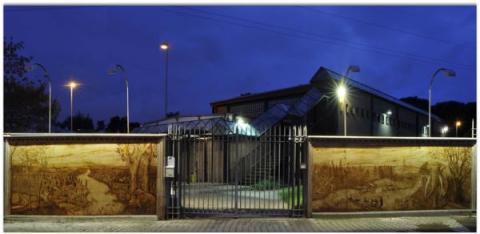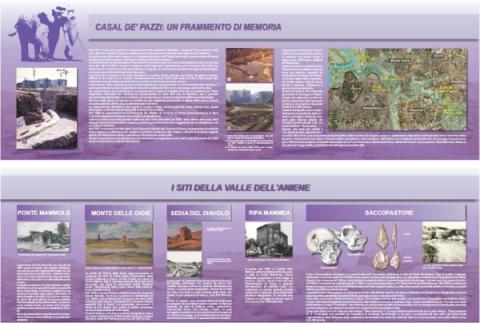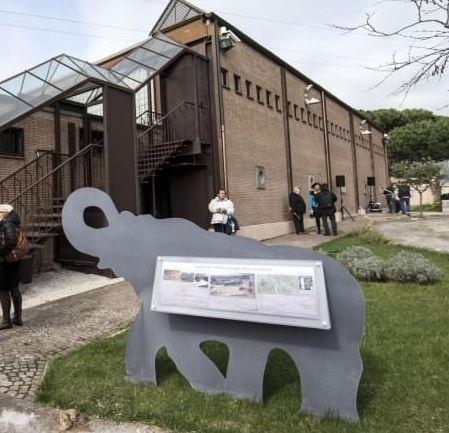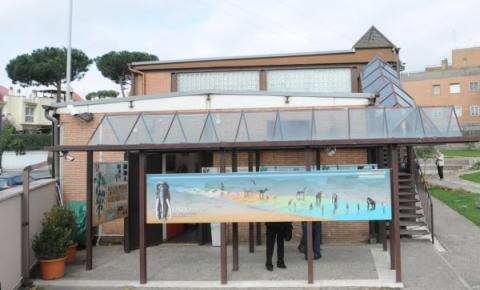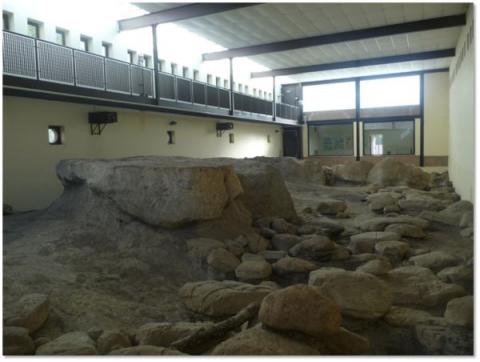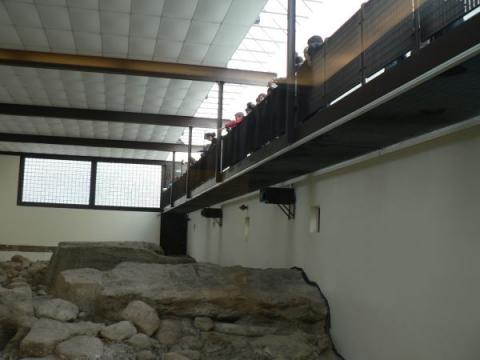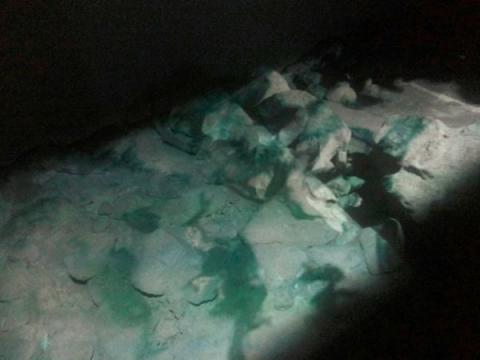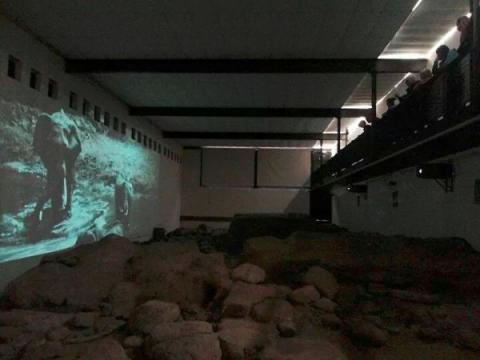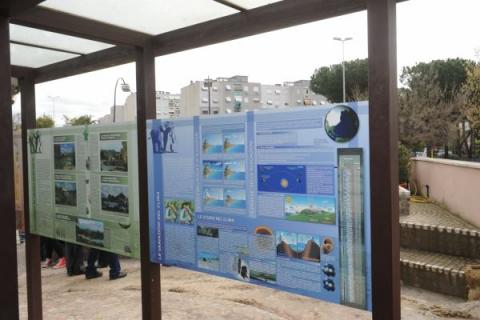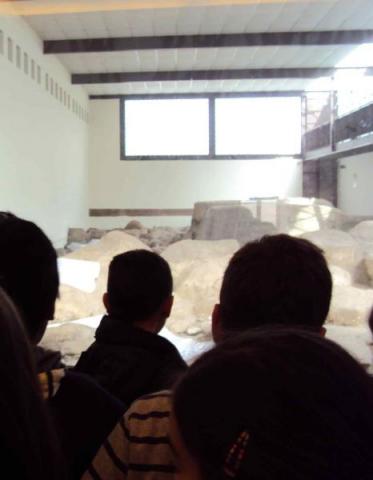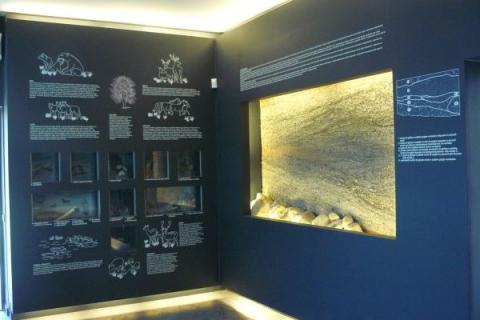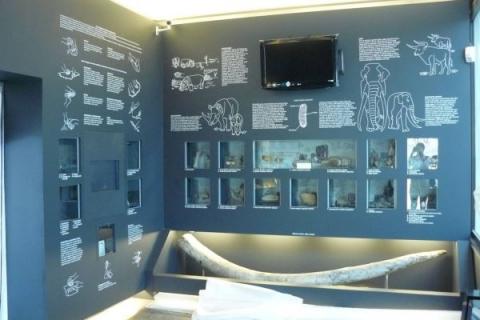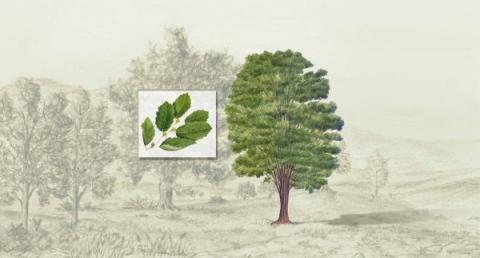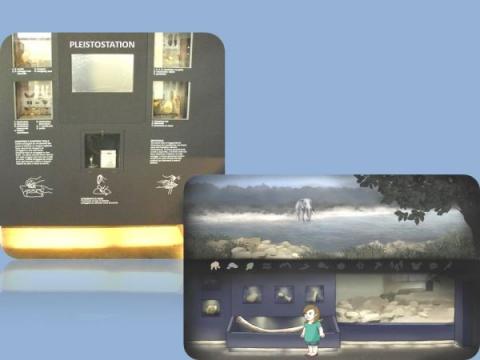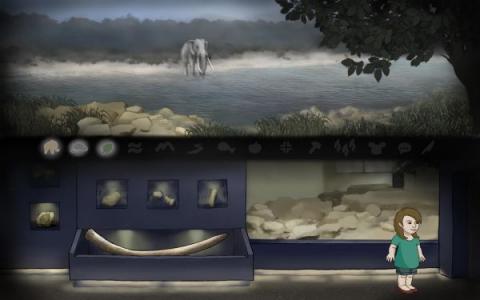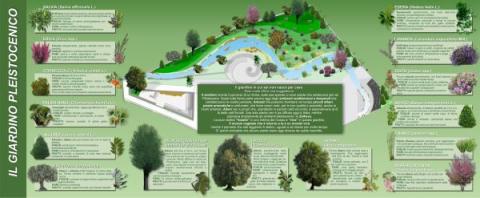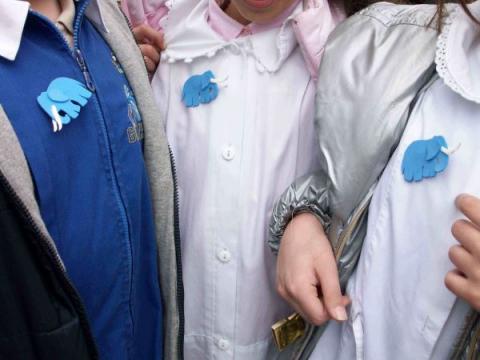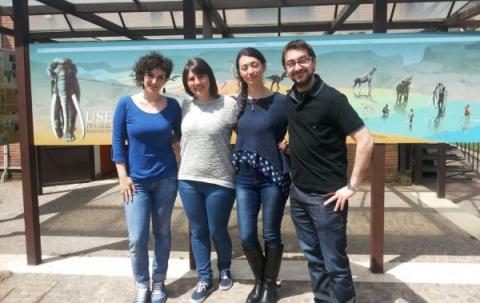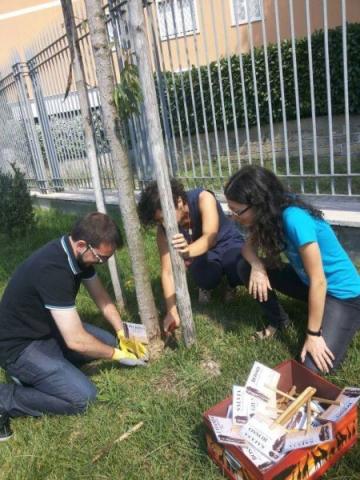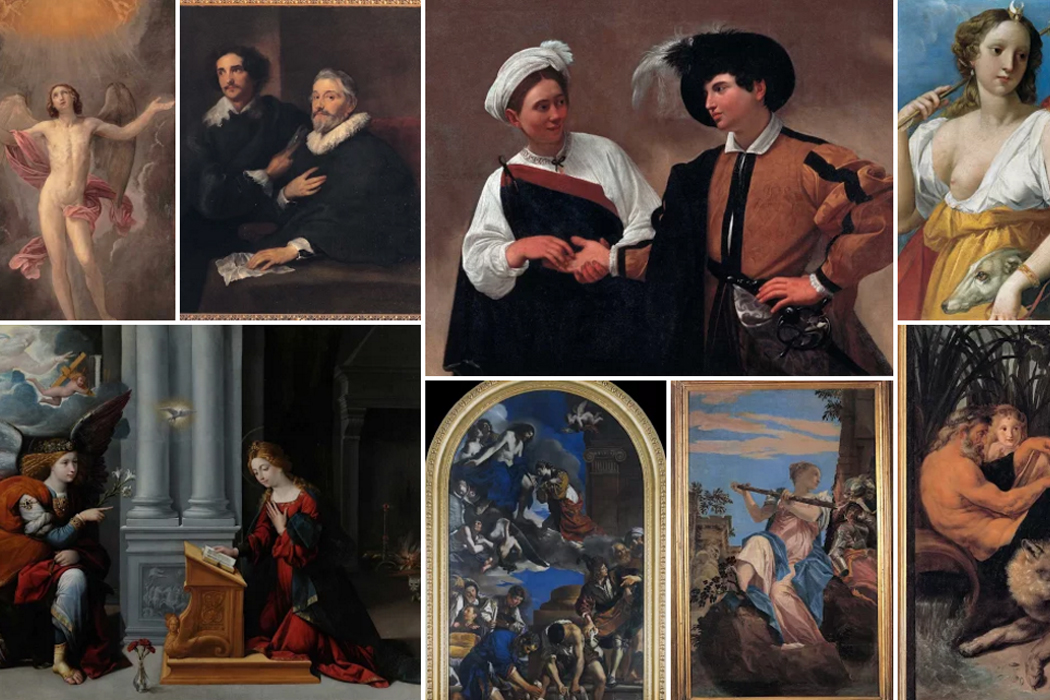Enhancement
When the site's preservation and protection efforts were completed, a museological path was set up since 2000, to communicate the highly complex issues the site offered and offers. In addition to the traditional form of textual communication, we have chosen to use, as far as possible, the verbal and visual communication, trying to take advantage of the full potential of new technologies.
For this reason, in addition to the traditional forms of exhibition, more direct communication tools, like those of a visual and/or engaging type, were preferred. We have used new educational techniques based on interactive tools such as real and virtual reconstructions and hands-on labs. The aim is to make the visitor interact and to keep his/her attention.
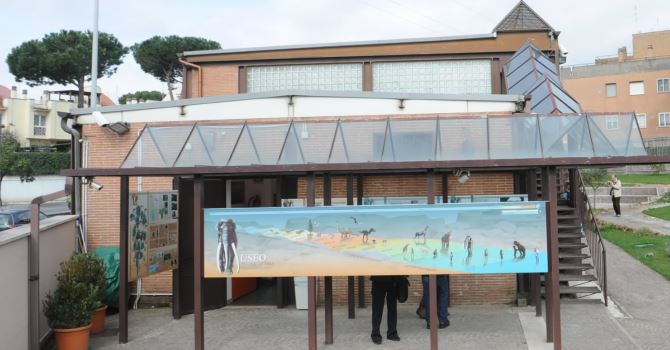
Following these principles, the visibility of the museum was achieved through two large panels, made of artistic majolica, arranged on both sides of the entrance, where lifelike reconstructions of the Pleistocene environment are shown (Fig 1).
The visitors then come into a large open area where two first panels initiate to the topics of the visit (fig 2 fig 3).
The story of discoveries and a great "strip of time" provide the preliminary contents for the viewing of the deposit (fig 4).
The first step on the itinerary includes a view of the deposit from on top of a footbridge (Fig 5). Natural lighting shows big pinkish rocks and fossil remains: up to 4 meters of elephant tusks, teeth, vertebrae. It is the "archaeological" landscape, what has survived after excavation.
Then, a darkening installation "unhooks" the visitor from an objective reading of the remains. A voiceover and related lights give simple answers to the questions raised by this fossil landscape, unexpected in the dense urban texture around it, enclosed by walls.
From here on the visitor is led to imagine what is not there anymore.
Through computer technology the riverbed is filled with "virtual" water (fig 6), demonstrating, almost physically, that we are in a river. Here the suggestive context prevails. On the large wall located opposite the walkway, a reconstruction of the Pleistocene landscape appears: a short film, which contains both animation sequences and fragments of actual shots (Fig 7).
The river, the plants, the animals appear, the focal point is the 3D reconstruction of a straight-tusked elephant. In the background the voice of a man who lived right there two hundred thousand years ago tells of his world. The video "breaks through" the wall, alternating the vision of the past (the Rome of the Pleistocene through the reconstruction of the landscape and of the elephant) with images of the present (sequences of the animals that still exist, albeit in habitats other than those of current Rome).
After this full immersion, different levels of depth are provided. In a covered outdoor space, some educational panels "tell" the evolution of the landscape and life in the Roman Campagna, starting from when Rome was covered by the sea (about 3 million years ago), reaching up to the present (fig 8).
Some of the finds are on display in the little exhibition hall, which has two large glass windows overlooking the deposit. The itinerary starts from environmental topics and closes with human activity (Fig 10 and 11). The showcases are equipped with drawings of reconstructions. In this space there is also a touch screen (fig 13), where the visitor can discover the issues provided by the exhibition in a playful and interactive way. In this "Pleistostation" they can use questionnaires, video games, movies, and hypertexts (fig 14).
The last step of the visit takes place in the outdoor area and proposes a reconstruction of the flora that characterized the banks of a river some 200,000 years ago (fig 15).
TERRITORY RELATIONSHIPS
Although the scientific and educational potential of the museum goes beyond the place where it has been casually built, the relationship with the local community is an important and vital goal. The sense of place, already born in the people who lives there, is a positive prerequisite for a mutual growth.
An important link has been created with the nearby “Istituto Comprensivo di Via Palombini” school which has joined the project "The school adopts a monument”. This project involves many Roman schools every year who "adopt" monuments, landscapes, historical and natural sites, relevant in the local context in which they are.
The pupils, with the help of their teachers and experts, by studying the sites they have adopted become their "guardians". The students, in addition to studying prehistory through what is displayed in the Museum become their own small guides, explaining to their parents and friends all that is visible and the significance of preserving the remains of the past for future generations (Fig 16).
The network of relationships within the territory does not only involve schools. The Museum is located on the edge of an important city natural park: the Aniene Park. In the area there are many organizations and cultural associations with which the Museum has close relationships, sharing activities and visitors.
In the exhibition project, social cooperatives were involved with the aim of offering opportunities for work or cultural deepening to the detainees (or ex) of the nearby prison of Rebibbia. The Museum also took part in the “progetto RAS” (environmental and social recovery), aimed at retrieving and the job insertion of prisoners.
Finally, a fruitful collaboration with the University "La Sapienza" has long been established, and many archeology students held their internship at the Museum, enriching with their enthusiasm and with new ideas the enhancing activities (Fig 17).
Last but not least, a profitable experience is ongoing, involving young graduates and not in welcoming visitors and in many other initiatives proposed by themselves. The young people involved in the project of the National Civil Service " The museum goes on the outskirts" are in fact daily present in the Museum (fig. 18 and 19).
Figures:
1. The two panels in artistic majolica placed at the entrance of the Museum, with the reconstruction of Pleistocene landscapes
2. One of the first panels that tells the history of the site




























